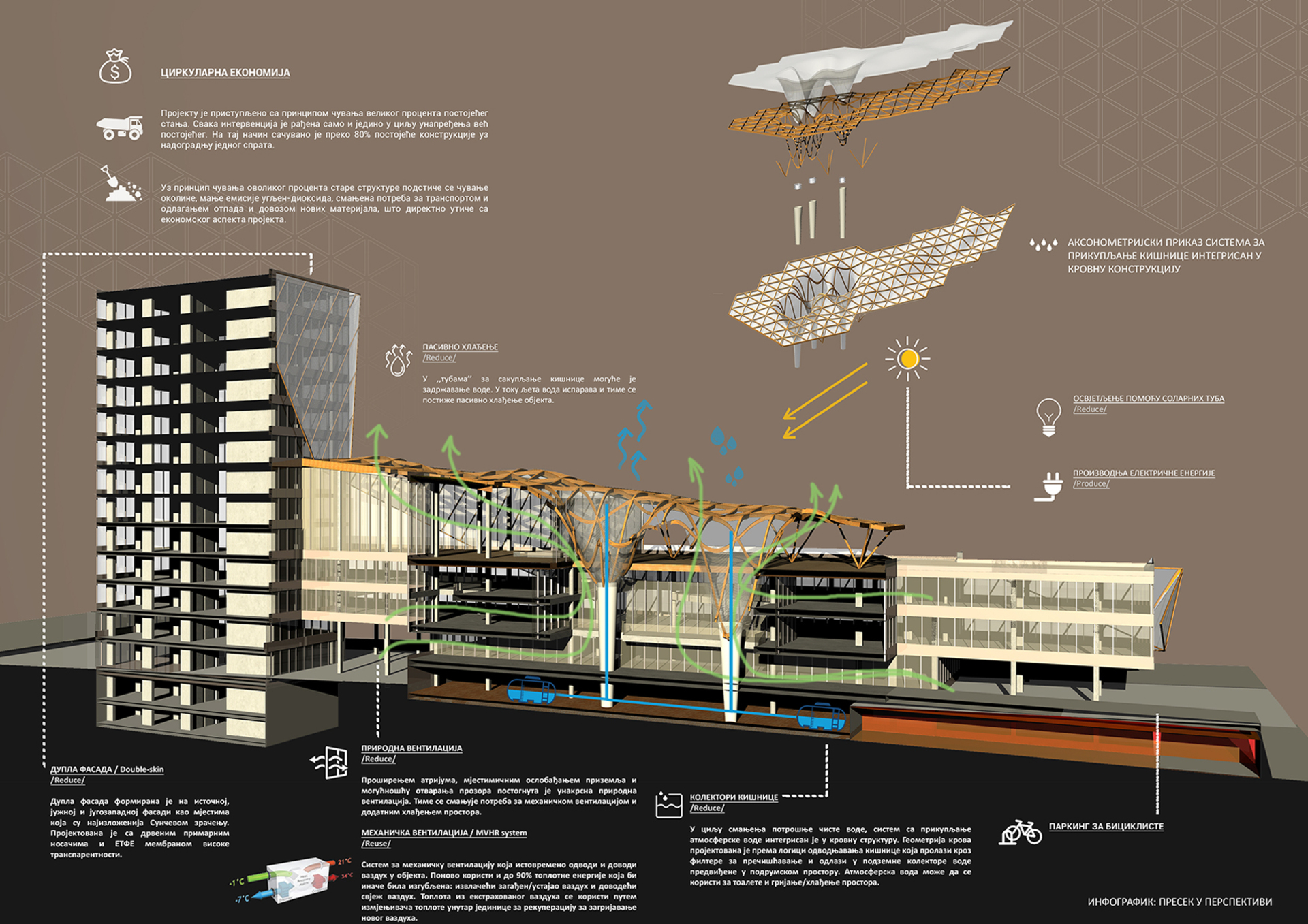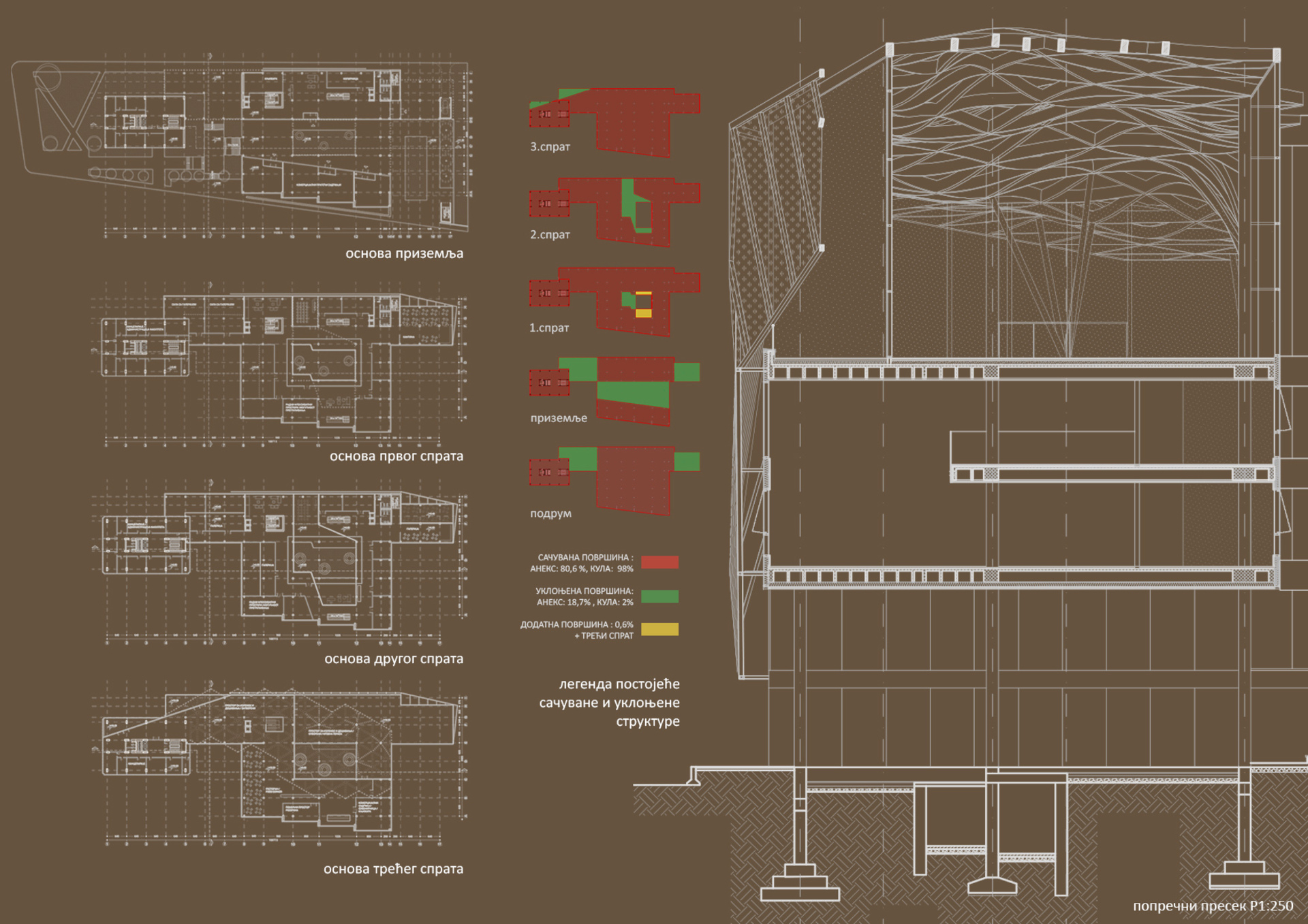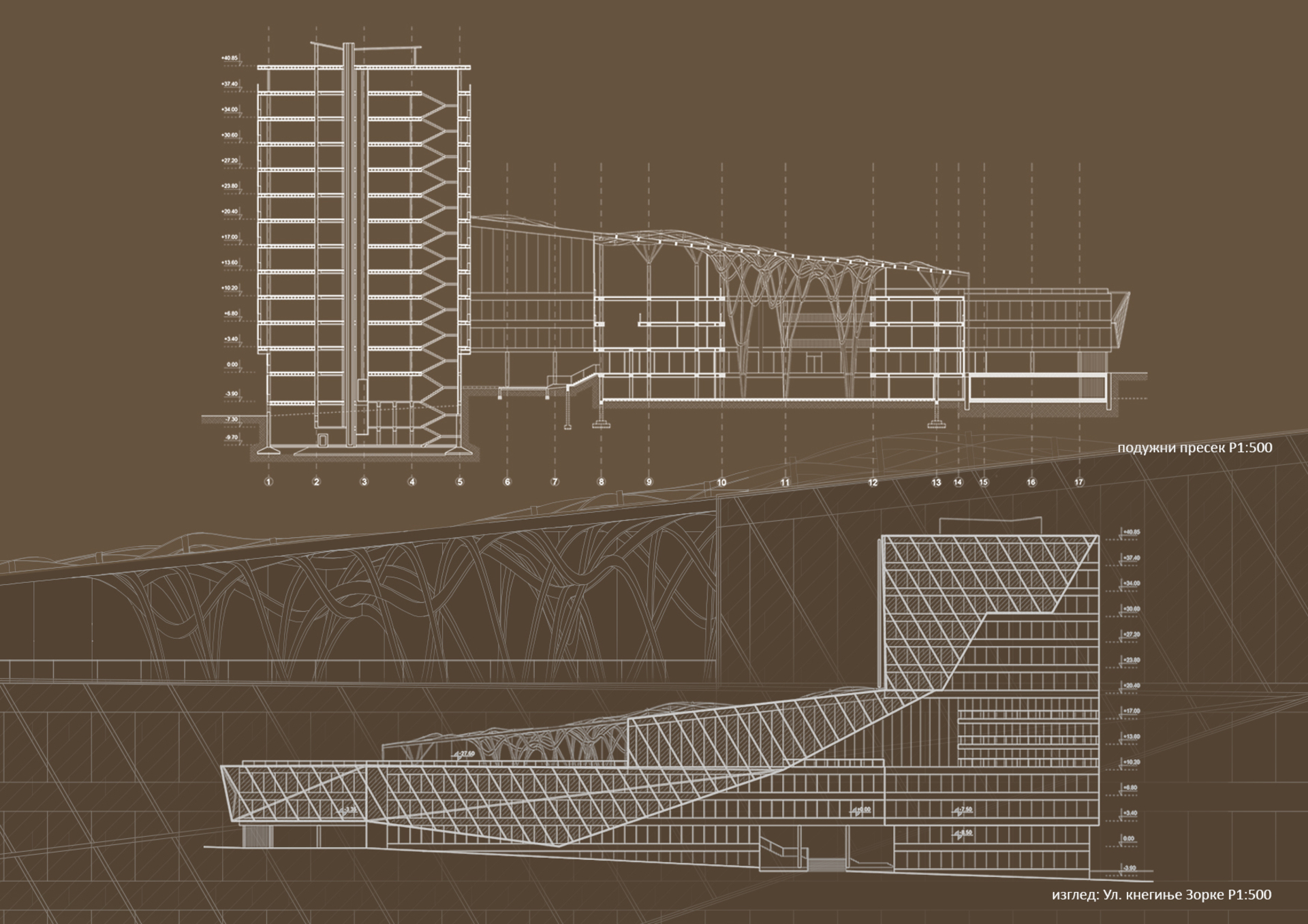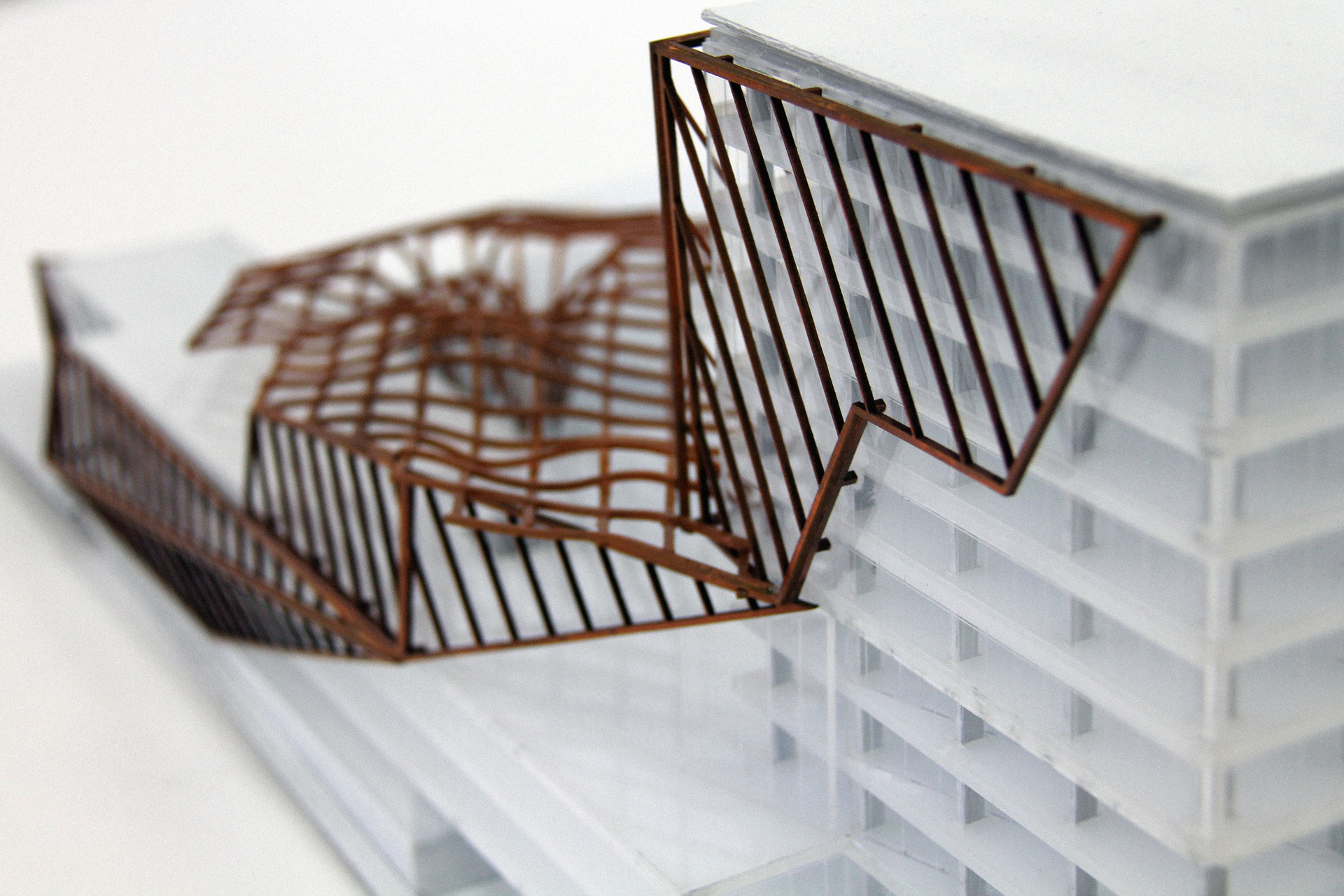Aleksandra Stevanović
CLIMATE AS CONTEXT: OLD FOR NEW
The aim of the assignment is to develop the ability to define an architectural solution that integrates responses to climatic, morphological, social and urban aspects of a given context. Through their work in the studio, students explore the cause-and-effect relationships of architectural-urban interventions in a given spatial framework, as well as the different design approaches that exploit the potentials of the existing construction fund. The focus of the work is on the creative application of the principles of bioclimatic, green and energy-efficient architecture in the design process, from the initial programmatic settings to details and materialization. The modern approach to the aspects of sustainability in architecture implies a wide range of topics and a new contextualization of the role of the architect in the process of forming the environment. By learning about the current theoretical views and “filtering” them through discussions and work on the assignment, the students define their theoretical starting points and then translate them into architectural objects, with all the elements of materiality. The theoretical segment of teaching in the first phase of work refers to the formation of a thematic framework related to various aspects of sustainability as a category that connects environmental, social and material implications of architectural activities, after which the students are introduced to the principles and systems of bioclimatic, green and energy-efficient architecture relevant to the chosen programmatic approach to the topic. Students are expected to explore programmatic, architectural, and technological solutions that will provide a contemporary response to the challenges of the new environmental paradigm in a specific social and spatial context.







